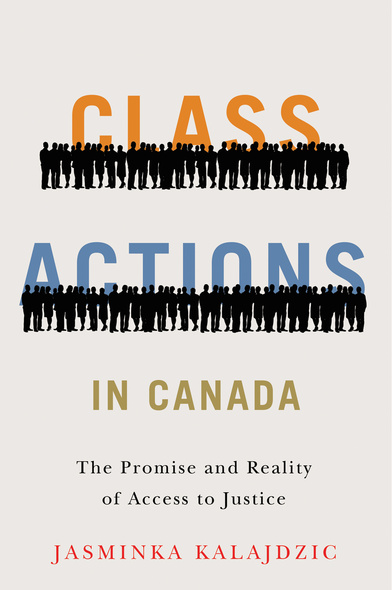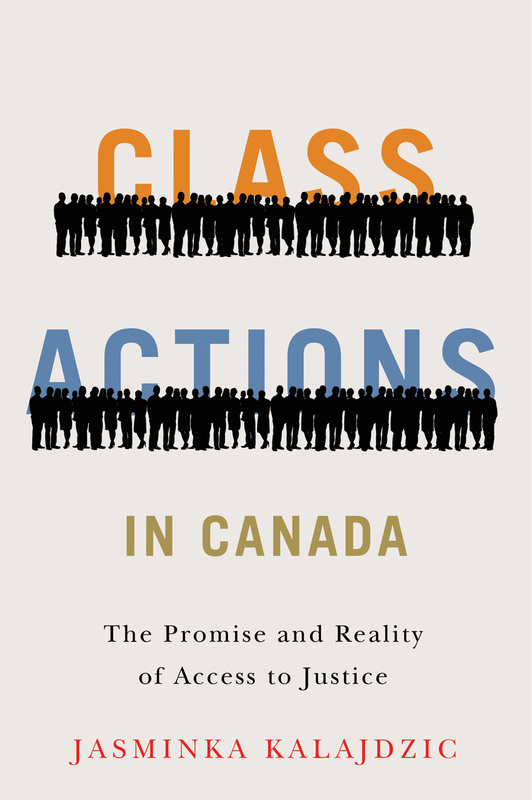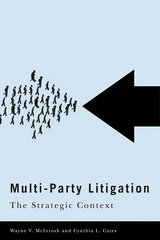
Class Actions in Canada
The Promise and Reality of Access to Justice
Whatever deficits remain in the Canadian project to make justice available to all, class actions have been heralded as a success story. Beginning in 1979 in Quebec, and in the ’90s for most of English-speaking Canada, class actions were introduced to overcome barriers to justice for those who would otherwise have no recourse to the courts. Class Actions in Canada critically and empirically examines whether collective litigation is meeting this primary goal.
First drawing on foundational literature and recent jurisprudence to propose a conceptualization that moves beyond mere access to a court procedure, leading class action scholar Jasminka Kalajdzic then methodically assesses survey data and case studies to determine how class action practice fulfills or falls short of its objectives.
Class Actions in Canada takes a rigorous, evidence-based approach. With class actions becoming increasingly controversial in the United States and collective redress mechanisms being cautiously adopted in many other parts of the world, this is a timely exploration of collective litigation as it has evolved in Canada over the past twenty-five years, and particularly in Ontario.An unprecedented contribution – Kalajdzic deftly melds theory, empiricism, and illustrative anecdote to fully describe class litigation in Canada. Much has been achieved since class actions became ubiquitous in Canada, but Kalajdzic’s book demonstrates how much more might be done to fulfill the regulatory and justice-access goals of aggregate litigation.
Class Actions in Canada offers an empirically founded approach for addressing theoretical questions relating to access to justice, including the time-consuming and cost-consuming nature of litigation. Full of insightful comments and references, this book will serve everyone interested in this topic: lawyers, judges, academics, and the public.
Introduction
1 The Facts: Survey Results
2 The Facts: Two Case Studies
3 Access to Justice
4 Selecting Cases
5 Settlements
6 Fees
7 Costs
Conclusion
Appendices
Notes
Index








